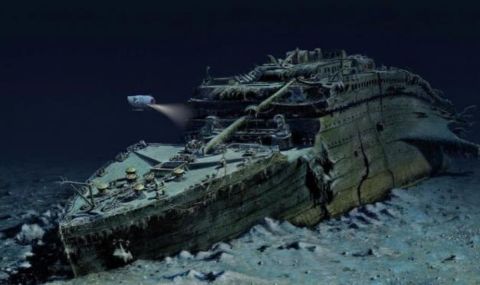On April 14, 1912, during its first and only voyage across the Atlantic Ocean, the ship “Titanic” collides with an iceberg around the island of Newfoundland and sinks. For its time, it was the largest ship in the world with a displacement of 46,300 tons, a length of 269 m, a width of 28.2 m, and a speed of 25 knots. 17,000 workers and engineers took part in its construction, and it itself represents the latest in science and technology. At the current exchange rate, the price of a first-class cabin reaches $55,000.
Launched on the water, the ship looks extremely reliable and majestic - according to the estimates of the time, it was considered unsinkable, since it consists of easily sealed sectors that do not allow water to penetrate. If for some reason a hole appeared in the hull, the designers assumed that the water would flood only the damaged sector. Hence the erroneous conclusion that in such a case the “Titanic” it would take one to three days to sink, during which time it would have been easy to get help from nearby ships.
During its maiden voyage from Southampton, England, to New York, USA, it struck an iceberg at 11:40 p.m. on Sunday evening, April 14, 1912, and sank two hours and forty minutes later at 2:20 a.m. on Monday morning, April 15, after splitting in two.
On the night of the Titanic's fatal encounter with the Greenland iceberg, Captain Stanley Lord was sailing in the same direction to Boston in the 6,000-ton ship California. On the evening of April 9, his ship was surrounded by ice and he was forced to stop until morning. Knowing about the media voyage of the “Titanic” and that it was in the same area, Captain Lord was the first to warn the captain of the “Titanic” about the dangerous icebergs by radio at 11:00 p.m. The message was not understood and since it did not carry a special danger sign, the radio operator of the “Titanic” did not report it to the captain. The radio operator of the “California” turned off the radio station and went to sleep because his duty had expired.
That same evening, the two observers of the “Titanic” reported an iceberg. The distance was somewhere around 200-250 m. The air temperature was around -10 degrees Celsius. The most famous iceberg strike in world history followed. The iceberg tore the hull apart from the bow for a length of 90 m. The water quickly filled the forward compartments. If only the first four compartments were flooded, the ship could continue without sinking, but the fifth compartment was also flooded.
The designer of the “Titanic” Thomas Andrews immediately made the necessary calculations - the ship would sink! “Titanic” sank in about two hours and twenty minutes, taking with it more than 1,500 victims. Only 704 people were saved, who were taken aboard the ship “Carpathia”.
